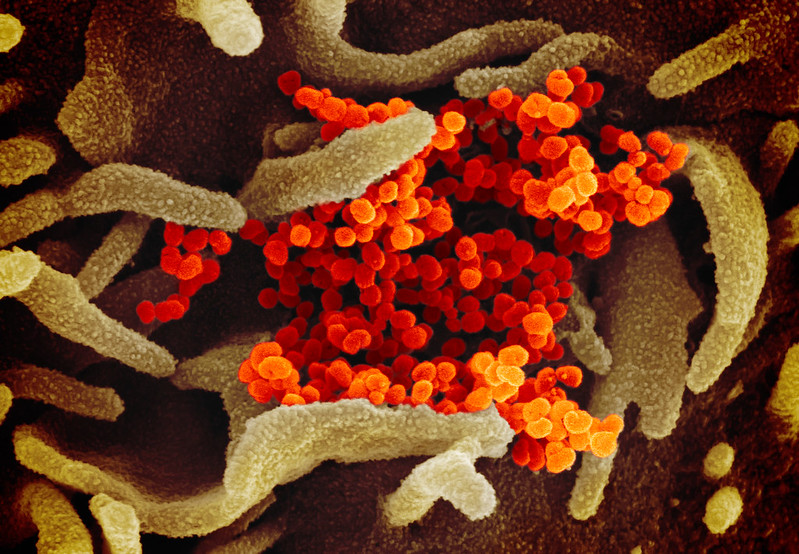The story of cystic fibrosis is quickly becoming one of the greatest success stories in medical history. That is a hell of a statement given not so long ago, a lot of what we have today would have only been a mere pipedream.
We still have a long way to go, but if the recent history of CF can teach us anything about what we may be able to expect in the future for our condition, I think things are looking pretty good!
The reason why so many people even know what cystic fibrosis is, is because CF has seen one monumental achievement after the next in three major industries – medical, academic (research) and financial – and all of them have contributed to the larger healthcare sector. Many of the amazing things that have happened in CF are proving to be what other rare disease communities are shooting for themselves.
1. The Nobel Prize
In 2007, the Nobel Prize in Medicine was awarded to three scientists for developing disease models in mice, and cystic fibrosis was one of the initial conditions studied. The process involved using stem cells to manipulate mouse genes to create a “designer mouse.” Dr. Oliver Smithies of University of North Carolina was able to use these stem cells to develop a CF mouse model to study potential treatments before they advance to human trials. This technology has provided the basis for a number of clinical trials in CF and has since been applied to other conditions and diseases as well. This scientific achievement is perhaps on the greatest contributors to our collective success in CF.
2. High Throughput Screening
Have you ever wondered how Kalydeco, Orkambi and Symdeko were discovered? The process is a bit complex, but Aurora Biosciences (and then Vertex) have been able to screen tens of thousands of small molecule compounds for CFTR correctors and potentiators. In the interest of being as simple as possible, high throughput screening is mechanically able to do what it would take humans years and years and years to complete. When you give high throughput screening a quick Google search, you find articles about the biopharmaceutical industry screenings libraries of thousands of compounds to find a handful that actually work. Imagine throwing 50,000 darts at a dart board and then seeing 75 of them stick, meticulously examining why those 75 darts stuck, and then testing and retesting them over and over again to figure out which darts are the best. I shudder to think what would have happened had the technology not been discovered. High throughput screening allows a place like Vertex to come to us with Kalydeco and all the rest in a timely way. Just look at this Vertex press release from 2004, the foreshadowing is amazing to read these days, “Using proprietary high-throughput screening techniques employing fluorescent dyes, Vertex researchers have been able to identify, in the laboratory setting, a series of compounds which could act as “potentiators”, compounds that directly increased the gating ability of the defective ion channel, and “correctors”, compounds that enhanced the number of CFTR channels at the cell surface. Vertex researchers have confirmed the activity of screening leads in secondary assays and used medicinal and combinatorial chemistry approaches to increase the potency of lead compounds.”
3. Venture Philanthropy
I consider Venture Philanthropy to be the single greatest achievement in CF, and largely the reason why cystic fibrosis is so mainstream these days. Want to talk about CF Awareness Month? Venture Philanthropy has done more for cystic fibrosis than anything all of us could do combined – including awareness if you consider that to be an objective metric. It has become the tried and proven model to change the course of history and provide life-changing treatments for people living with a specific condition or illness (CF in our case). It’s the kind of thing that just about any organization in our business is trying to emulate. It is also why it’s more and more likely we will have be able to modify CF to the point where people will be able to live relatively normal lives.
Contrary to some misinformation out there, Cystic Fibrosis Foundation invests in drug development rather than issuing grants and hoping for the best. For many decades, though, they actually did just that. They issued academic grants, and while we learned a lot about CF, nothing actually happened to improve our lives. That all changed at the turn of the millennium when CFF decided the best way to develop drugs for our patient population was to pretend to be a venture capitalist or investment banker. There is money to be made in healthcare, and CFF has figured out how to exploit our healthcare system for our collective benefit. Rather than issue a grant to develop CFTR modulators, CFF decided to stimulate the effort through an investment to Aurora Biosciences (Vertex), and thus hold a stake in the program. Cystic Fibrosis Foundation’s balance sheet shows us that they have close to $4.5 billion in assets, and that’s largely because CFF was able to sell off their royalties due from Kalydeco, Orkambi, Symdeko and the rest. Drug prices are high, and, well, CFF has benefited. In fact the Foundation has benefited to point where we could all do a Great Strides walk every month for the next decade and never get close to raising money equivalent to the Foundation’s assets. The venture philanthropy mechanism has also allowed CFF to guarantee affordable drugs to Americans with cystic fibrosis where legally allowed (remember, the one major exception, and a place where CFF along with whatever partner aren’t able to make a guarantee, is when people are covered by state or federal insurers [Medicare/Medicaid] thanks to the worst law in the US federal code) through mandated co-pay assistance programs.
4. The Discovery of Cross-Infection
The discovery of cross-infection and subsequent development of an infection control standard has saved countless lives. While that may be a near impossible metric to measure, the facts are undeniable that collective gatherings of people with CF (the CF camps) in the 70’s, 80’s and early 90’s, and the non-existent infection prevention protocols in hospitals up until the early 00’s contributed to the rapid decline of many people with CF. First hypothesized in 1986, a CF clinic had the foresight to segregate people with CF who were inpatient, and subsequently saw a decrease in the transmission of Burkholderia cepacia complex, which had been wreaking havoc on the clinic’s patient population. In 2008, Dr. Steven Conway from the UK made a strong case for segregating patients prior to the 2013 infection control guidelines through a detailed history of cross-infection in an article where he discussed a number of scholarly articles that indicated clinical decline in CF camp attendees:
Tummler et al. documented new P. aeruginosa infection in eight of ten patients after a four- to six-week stay [at a CF camp]. Two weeks of intravenous antibiotic treatment failed to eradicate the infection in seven of eight patients. Three of the seven had infection with a mucoid Pseudomonas strain characteristic of chronic infection and therefore strongly suggestive of person-to-person spread at the camp.11 Ojeniyi et al. documented 17 of 22 patients with chronic infection before a one-week winter camp. All 22 stayed at the same hotel and participated in the same activities. After the camp all 22 patients had P. aeruginosa infection… In our own experience in the late 1980s, when [cepacia] infection was beginning to decimate CF clinics, two of our patients attended American summer camp holidays. Two and six months later, respectively, [cepacia] was isolated for the first time from these patients. One patient progressed to an accelerated decline over two years. The other showed a precipitous deterioration and died 65 days later.
Finally, in 2013 we recognized a community-wide infection prevention and control guideline, which has largely eliminated the threat of patient-to-patient microbial contamination, and has thus positively impacted thousands of lives!
5. The CF Gene
Last, but not least, the cystic fibrosis gene was discovered in conjunction with researchers from Toronto and the University of Michigan. Discovery of the gene, for all intents and purposes, has allowed us to develop personalized medications and understand different variants of the conditions. At the time, the discovery of the CF was gene was said to have been one of the most significant scientific breakthrough is history. Without the CF gene, we wouldn’t have anything of the above listed accomplishments!





